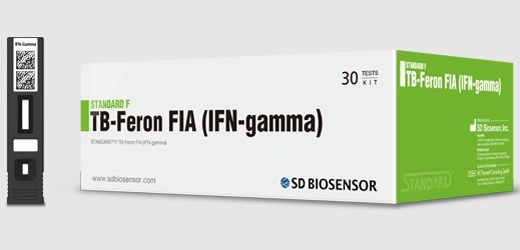Rapid Molecular Assay Detects Pneumonia Causative Agents
By LabMedica International staff writers
Posted on 16 May 2012
A rapid real-time polymerase chain reaction assay (qPCR) has been developed for detecting two microrganisms that cause pneumonia directly from respiratory specimens. Posted on 16 May 2012
The assay provides over five times faster results compared to existing methods while maintaining equivalent detection rates for specimens containing limited target organisms such as Mycoplasma pneumoniae and Chlamydophila (Chlamydia) pneumoniae.
Scientists the Respiratory Diseases Branch, of the US Centers for Disease Control and Prevention (CDC; Atlanta, GA, USA) developed and evaluated individual singleplex assays for each pathogen and a multiplex assay for simultaneous detection of M. pneumoniae, C. pneumoniae, and human DNA. Nasopharyngeal and/or oropharyngeal clinical specimens were collected by the Centers for Disease Control and Prevention during domestic outbreaks between 2007 and 2009.
Primers and probes previously designed and optimized for specific detection of the ATPase Mp3 for M. pneumoniae, the arginine repressor (argR) of C. pneumoniae, and human nucleic acid (RNase P) were used in the study. For singleplex reactions, the reaction mix contained PerfeCTa qPCR FastMix and for multiplex reactions the PerfeCTa Multiplex qPCR SuperMix was used, and both are products of Quanta Biosciences, (Gaithersburg, MD, USA). Total nucleic acid (TNA) was extracted from universal transport media (UTM) using a Nucleic Acid Isolation Kit I on the MagNA Pure Compact instrument (Roche Applied Science, Indianapolis, IN, USA).
The scientists found a greater than 90% concordance using the rapid singleplex or multiplex assay. They then assessed the performance of the rapid real-time PCR assay using UTM directly from clinical specimens without nucleic acid extraction. Of the specimens identified as positive by standard real-time PCR, 90% and 59% of UTM samples were positive for M. pneumoniae and C. pneumoniae, respectively, using singleplex assays. These percentages dropped to 69% for M. pneumoniae and 52% for C. pneumoniae when tested with the rapid multiplex assay.
The authors concluded that although some loss of sensitivity was observed when performing rapid real-time PCR without a separate extraction step, this method may still be a valuable tool for identification of M. pneumoniae and C. pneumoniae infections in the primary care setting that would otherwise go unnoticed or misdiagnosed. Point-of-care testing would likely improve patient treatment, reduce inappropriate antibiotic use, and have utility for rapid pathogen detection in situations where prompt results are critical. The study was published on April 25 2012 in the journal Diagnostic Microbiology and Infectious Disease.
Related Links:
US Centers for Disease Control and Prevention
Quanta Biosciences
Roche Applied Science














